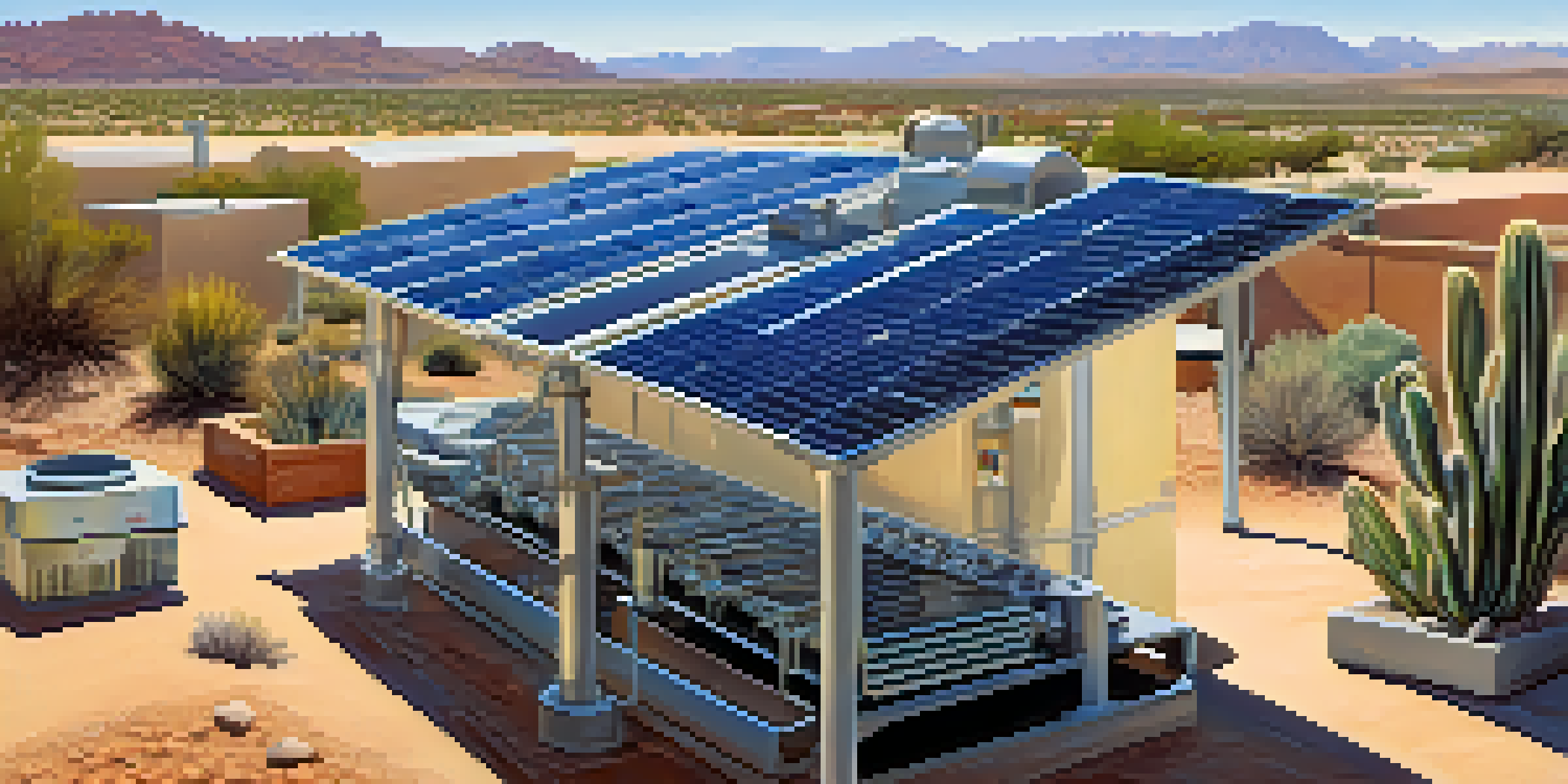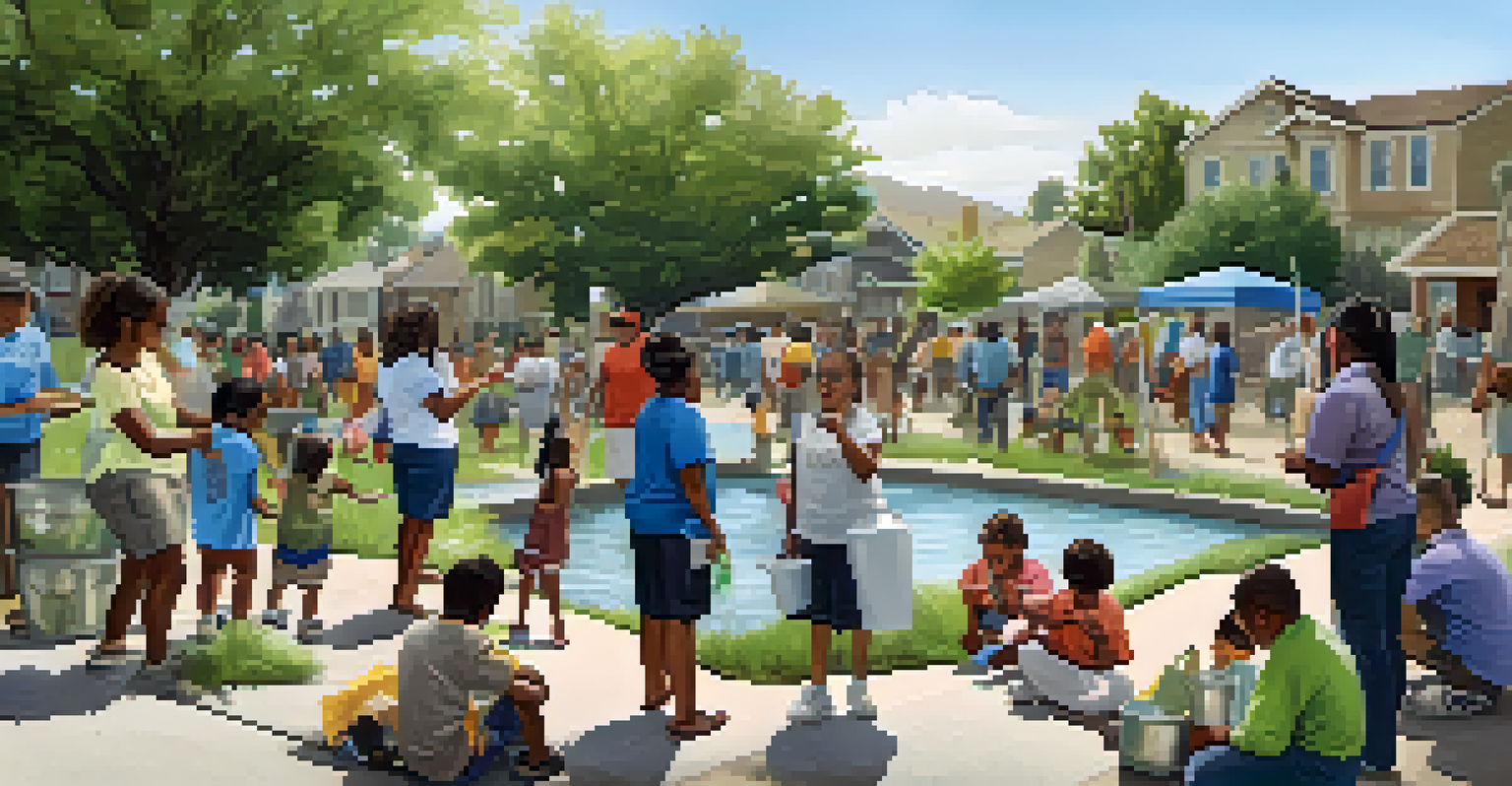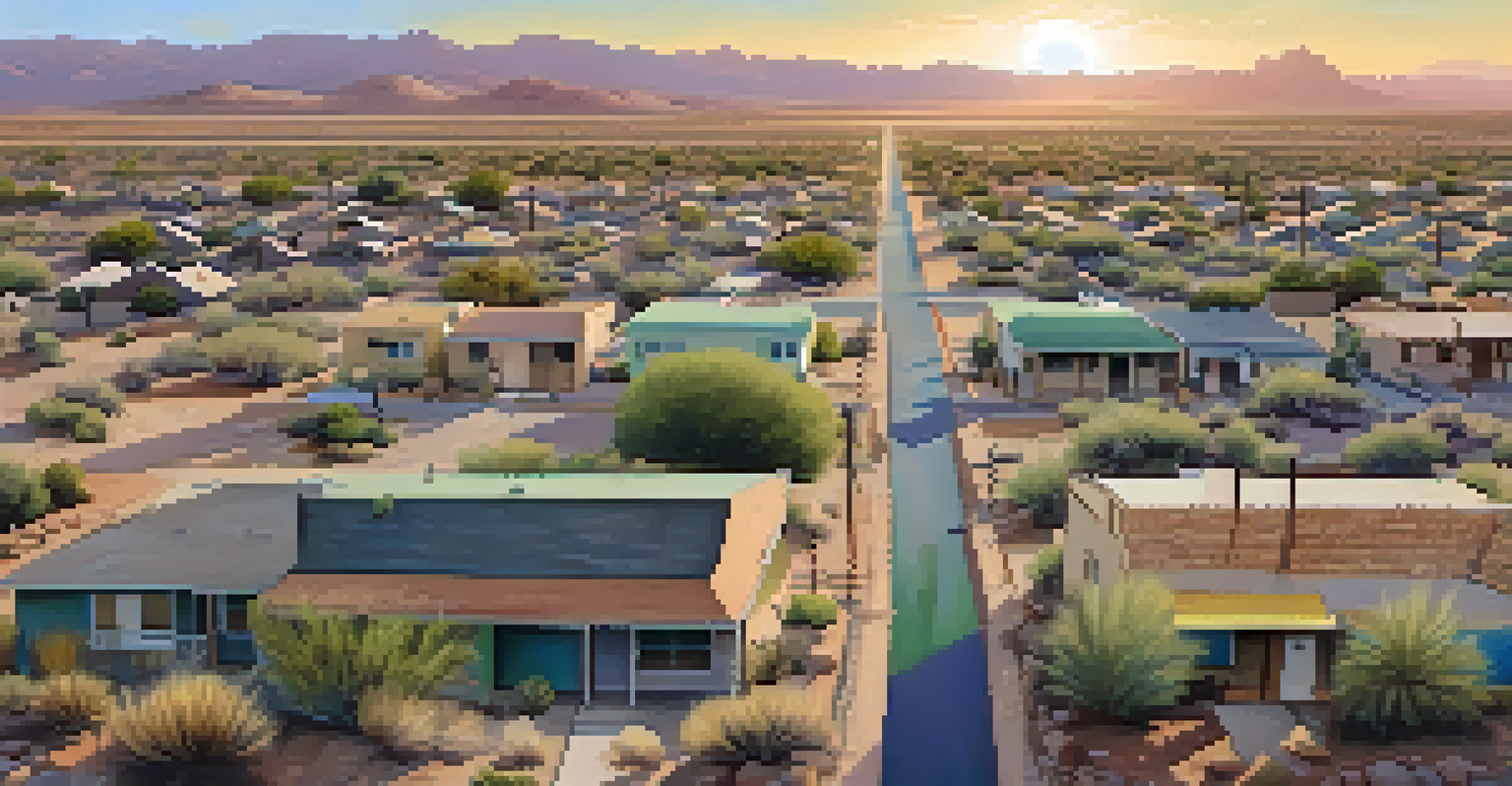Water Access Issues in Arizona's Underserved Neighborhoods

Understanding Arizona's Water Landscape
Arizona is known for its arid climate, which makes water a precious resource. The state's geography and growing population place immense pressure on its water supply, particularly in underserved neighborhoods. Here, the struggle for clean, accessible water is a daily reality for many residents.
Water is the driving force of all nature.
In these areas, water access issues often stem from a mix of historical neglect and systemic barriers. Many communities lack the infrastructure necessary to deliver safe and reliable water, creating a cycle of hardship that affects health and well-being. For instance, families may have to rely on bottled water or travel long distances to obtain this essential resource.
Understanding this landscape is crucial for tackling the challenges ahead. By recognizing the unique circumstances of underserved neighborhoods, stakeholders can develop targeted solutions that prioritize equity and sustainability in water access.
The Impact of Inequitable Water Access
Water access isn’t just about having a tap in your home; it's about overall quality of life. In Arizona's underserved neighborhoods, limited access to clean water can lead to serious health issues. Residents may face increased risks of waterborne diseases, dehydration, and other health complications that stem from inadequate water supply.

Furthermore, the stress of unreliable water access can take an emotional toll on families. Imagine worrying every day about whether you’ll have enough clean water for cooking, drinking, or bathing. This anxiety can disrupt daily routines and diminish quality of life, particularly for children who need stable environments to thrive.
Water Access is a Vital Resource
In Arizona's underserved neighborhoods, access to clean water is a daily struggle that directly impacts health and quality of life.
This inequity also has broader societal implications. Communities struggling with water access may find it challenging to attract businesses, leading to economic stagnation. Addressing these water access issues can pave the way for healthier, more vibrant neighborhoods that foster growth and opportunity.
Barriers to Water Infrastructure Development
Building and maintaining water infrastructure in underserved neighborhoods is fraught with challenges. One major barrier is funding; many areas lack the financial resources necessary for extensive water system upgrades. This often leaves communities reliant on outdated systems that can’t keep pace with demand.
Access to clean water is a fundamental human right.
Additionally, bureaucratic hurdles can complicate the process. Permitting and regulatory requirements can slow down crucial projects, especially in neighborhoods where government resources are already stretched thin. This creates a frustrating cycle where communities wait for improvements that never seem to come.
Cultural and language barriers may also play a role in these challenges, making it difficult for residents to engage with local governments effectively. Encouraging community involvement and fostering trust can be key to overcoming these obstacles and ensuring that everyone has a voice in water access initiatives.
Community-Led Initiatives for Change
Despite the challenges, many communities are taking matters into their own hands. Grassroots organizations and local leaders are spearheading initiatives to improve water access and raise awareness about the issue. These efforts often focus on educating residents about water conservation and advocating for infrastructure improvements.
For example, community workshops can provide valuable information on water-saving techniques, helping families stretch their limited resources further. By empowering residents with knowledge, these initiatives not only tackle immediate water access issues but also foster a sense of ownership and responsibility within the community.
Community Initiatives Drive Change
Grassroots organizations are leading efforts to improve water access by educating residents and advocating for infrastructure improvements.
Collaboration between local organizations and government agencies is also vital. When communities work together, they can create innovative solutions that meet their specific needs. This collaborative approach can lead to sustainable practices that ensure water access for generations to come.
The Role of Local Government in Water Access
Local governments play a crucial role in addressing water access issues, but their involvement can vary significantly across Arizona. In some areas, officials are actively working to improve water infrastructure and access, while in others, neglect persists. This disparity can leave underserved neighborhoods feeling forgotten and without recourse.
Effective policies are essential for ensuring equitable water distribution. Local governments can implement regulations that prioritize funding for vulnerable communities and streamline the permitting process for new projects. By focusing on equitable development, they can help bridge the gap between affluent and underserved neighborhoods.
Moreover, transparency and communication are vital. Engaging with residents to understand their needs and concerns can help build trust and create a more inclusive approach to water management. When local governments listen, communities are more likely to feel empowered and motivated to take part in the solution.
Innovative Technologies for Water Solutions
As technology advances, new solutions are emerging to address water access issues in underserved neighborhoods. Innovative water purification systems and rainwater harvesting techniques can provide alternative sources of clean water. These technologies can be particularly beneficial in regions where traditional water supply methods are insufficient.
For instance, solar-powered water purification units can offer a sustainable solution to communities lacking reliable access to clean water. By harnessing renewable energy, these systems not only reduce dependence on external sources but also lower long-term costs for residents.
Local Government's Crucial Role
Effective local government policies and community engagement are essential for addressing water access disparities across Arizona.
Moreover, technology can enhance community engagement. Mobile apps that track water usage or report issues can empower residents to take control of their water resources. By integrating technology into water management, communities can become more resilient and proactive in addressing their needs.
The Future of Water Access in Arizona
Looking ahead, the future of water access in Arizona's underserved neighborhoods hinges on collective action. By bringing together community members, local governments, and innovative organizations, there is potential for meaningful change. A collaborative approach can prioritize the needs of those most affected and create sustainable solutions.
Advocacy will also play a critical role in shaping policies that support equitable water access. As awareness grows, more voices can join the conversation, pushing for systemic changes that benefit underserved communities. This movement can empower residents to demand their rights and hold decision-makers accountable.

Ultimately, the goal is to ensure that every Arizonan has access to safe, clean water. By addressing the challenges head-on and embracing innovative solutions, we can work towards a future where water access is a right, not a privilege.